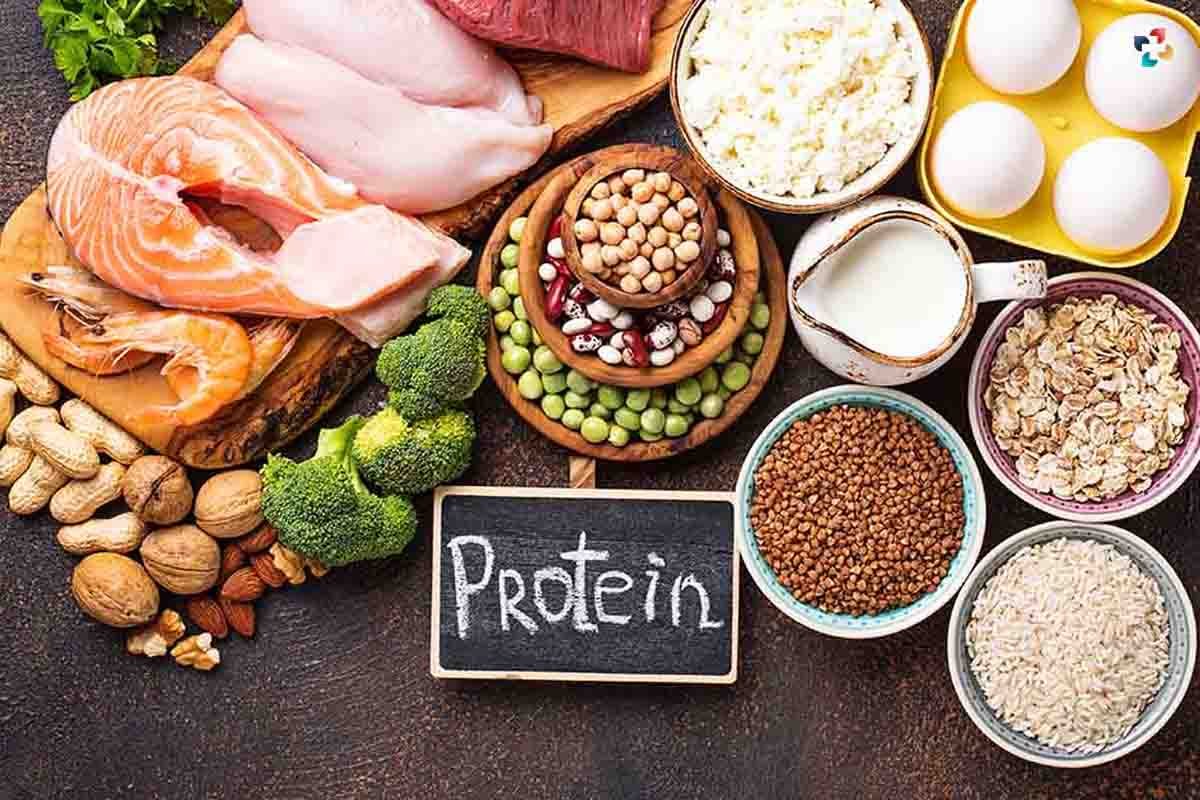Goal Based Macronutrients are nutrients that our bodies need in larger amounts. All food can be broken down into three macronutrients: protein, carbohydrates, and fat. This guide to macros will help you to understand what role each macronutrient plays in the body, as well as the best food sources for each one.
Nutrition is one of the most important components of a healthy lifestyle, as food provides nourishment for the body so that it can grow and repair. All food can be broken down into three Goal Based Macronutrients: protein, carbohydrates, and fat.
Some foods contain only one or two of the macronutrients, while most contain some combination of all three. This guide to macros will help you to understand what role each macronutrient plays in the body, as well as the best food sources for each one.
Here are 3 Goal Based Macronutrients;
1. PROTEIN
Protein makes up every tissue of the body—hair, skin, bones, muscles, and organs—as well as hormones and enzymes that catalyze reactions in the body. The building blocks of protein are called amino acids. There are 20 amino acids, which are divided into two groups: essential amino acids, which must be consumed from the diet, and nonessential amino acids, which your body can make from other amino acids.
Protein comes from both plant and animal sources. All animal food—fish, poultry, eggs, dairy, beef—are considered complete proteins as they contain all nine essential amino acids. Plant sources of protein—beans, nuts, seeds, whole grains, and vegetables—are considered incomplete proteins because they are missing at least one essential amino acid.
There are only a few plant foods that contain all essential amino acids, including soy, quinoa, and amaranth, the latter two being seeds. Those who consume a vegetarian or vegan diet can get all of the recommended protein by eating a wide variety of plant foods.

Most protein foods come packaged with other Goal Based Macronutrients. For example, wild Alaskan salmon has high levels of good-for-you omega-3 fats. Beans, nuts, and seeds contain carbohydrates as well as protein and fat. Beans contain 7 grams of protein in one-half cup, which is the equivalent of 1 ounce of chicken. Goal Based Macronutrients for Protein: 10 to 35 percent.
But beans also contain 20 grams of carbohydrates in that same serving. Given that the carbohydrate content is so high, if you’re not following a vegan diet, you might want to consider counting your beans toward your carbohydrate intake. Other foods such as nuts and seeds contain more fat than protein and are usually counted as fat rather than protein.
Protein-rich foods contain 7 grams of protein per ounce. The leanest sources of protein include fish (especially omega-3-rich varieties), poultry, eggs, low-fat dairy, lean beef and pork, soy (tofu, tempeh, soy milk), beans, and legumes.
2. CARBOHYDRATE
Carbohydrates are composed of carbon, hydrogen, and oxygen molecules and provide the main source of fuel for the body in the form of glucose. Carbohydrates can be classified as simple, having only one or two sugar molecules and found in foods such as sugar, juice, fruit, and milk; or complex, comprised of long strands of glucose chains and found in foods such as bread, cereal, rice, and pasta.
Carbohydrates can also be classified as refined, where the food item has been processed and stripped of its fiber, leaving it with few nutrients (white pasta, white bread, white rice, fruit juice, white sugar); or unrefined, in which the food remains either intact (brown rice, vegetables, whole grains), or retains all the fibrous portions of the grain, but is processed and appears in a different form (whole-grain bread/cereal). The most nutritious carbohydrates are those that are both unrefined and complex.

During digestion, all carbohydrates get broken down into glucose molecules, which then get absorbed into the bloodstream and sent into various pathways. Some of the glucose is shuttled into the cells with the help of insulin. The glucose is then used by the cells for energy. Goal Based Macronutrients for Carbohydrates: 45 to 65 percent.
When there is more glucose in the blood than insulin can handle, the excess gets packaged into fat particles and stored in fat tissue. Refined carbohydrates produce a larger increase in blood sugar levels, which places a greater demand on the pancreas to produce insulin.
To reduce the strain on the pancreas and help keep insulin levels in check, it is recommended that unrefined carbohydrate-rich food be chosen over its refined counterparts.
Most carbohydrate-rich foods—grains, beans, vegetables, and dairy—also contain some level of protein as well as fat. When counting your macros, you need to take this into consideration.
3. FAT
Fat plays numerous essential functions in the body. Your brain’s composition is primarily fat and needs fat to keep it healthy. Cholesterol and sex hormones are formed from fat. The fat-soluble vitamins—A, D, E, and K—need dietary fat so they can be properly absorbed.
Fat takes longer to digest, which allows for both greater satiety and a slower rise in blood sugar levels from any carbohydrate-rich foods that may be eaten at the same time. Getting enough dietary fat makes your hair and skin look and feel healthier. And best of all, fat is a source of fuel that imparts a luscious quality to any recipe, which makes any meal more satisfying.
There are four types of fat, each with different health implications. Saturated fats, such as butter, lard, and coconut oil, are solid at room temperature. For many decades, saturated fat has been vilified as a major contributor to heart disease. Goal Based Macronutrients: 20 to 35 percent.
More recent findings suggest that saturated fat is neutral when it comes to heart-disease risk. Coconut oil, in particular, has been of particular interest over the past few years. Although it is a saturated fat, it is comprised mostly of medium-chain triglycerides (MCT), which the body metabolizes differently than the long-chain fatty acids that make up most of the fats in the food we consume.
MCTs are metabolized by the liver for energy rather than converted to fat for storage. The American Heart Association recommends that no more than 7 to 10 percent of total calories come from saturated fat.
Unsaturated fats are those that are liquid at room temperature, such as oil. Unsaturated fats can further be classified as monounsaturated and polyunsaturated fats. Monounsaturated fats (MUFAs) are found in avocado, olive oil, almonds, cashews, pecans, flax seeds, and sesame seeds and are regarded as anti-inflammatory and heart-healthy.
Polyunsaturated fats (PUFAs) are further divided into omega-6 and omega-3 fats. The standard American diet is rich in omega-6 fats, which are found in safflower, sunflower, grape seed, corn, and soybean oils. Research is mixed on omega-6 fats—some experts consider certain omega-6s to be pro-inflammatory and others anti-inflammatory.

On the other hand, omega-3 fats are looked at favorably due to their strong anti-inflammatory properties. Food sources of omega-3s include fatty fish (wild Alaskan salmon, wild Pacific halibut, sardines, mackerel), chia seeds, and walnuts.
The omega-6 to omega-3 ratio in the typical American diet is greater than 40:1, while the recommendation is a ratio of no more than 4:1. By emphasizing omega-3-rich foods and limiting omega-6 oils and foods, it is possible to achieve a healthier.
The final type of fat is trans fats, which are created by heating a liquid oil under high pressure and adding hydrogen molecules to turn it into a solid, saturated-type fat. These fats, which include shortening and margarine, are damaging to your heart because they increase LDL-cholesterol levels (the so-called bad cholesterol) and triglycerides, while also lowering protective HDL-cholesterol levels.
Foods that contain these fats include store-bought baked goods (doughnuts, pastries, cake, cookies, and pies) and crackers because trans fats enhance texture and have an increased shelf life. We recommend that you eliminate all trans fats.
The Bottom Line
A healthy diet needs to have a balance of protein, carbohydrates, and fat. Every meal and snack should have each of the Goal Based Macronutrients represented for long-lasting energy and optimal nutrient intake. Choosing the highest quality food—real, whole, unprocessed—will help reduce one’s risk for obesity, diabetes, heart disease, and certain forms of cancer.
Also Read: 10 Best Health Benefits of a Vegan Diet









